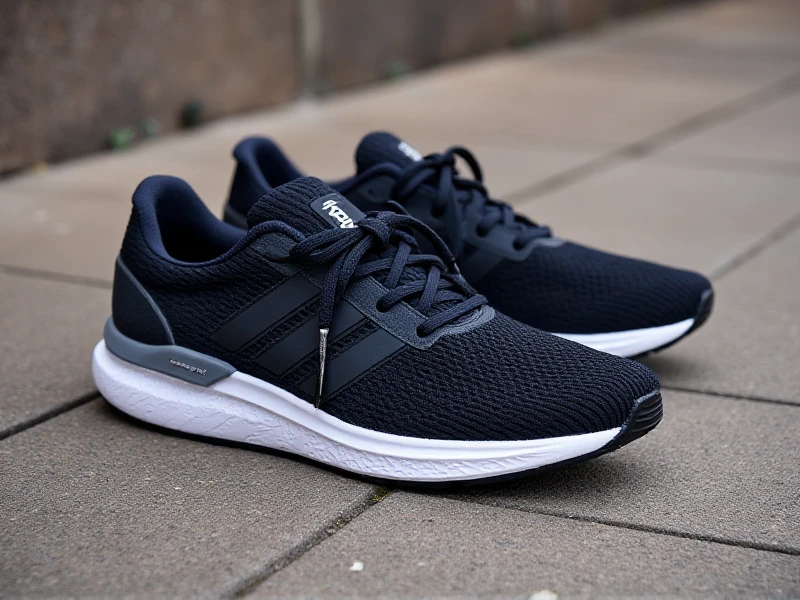The Ultimate Guide to Men's Training Shoes: Elevate Performance & Protect Your Feet
2025-06-06

Gone are the days of using one pair of sneakers for everything. Today's active man knows the critical difference dedicated men's training shoes make in performance, comfort, and injury prevention. Whether you're lifting serious weights, mastering HIIT circuits, tackling agility drills, or sweating through bootcamp, the right training shoes aren't a luxury – they're essential gear. Let's explore why you need a specialized pair and what features to look for.
Why Dedicated Men's Training Shoes Matter
Your standard running shoe is engineered for forward motion and heel-to-toe cushioning. Training, however, involves multi-directional movements: lateral cuts, jumps, lunges, pivots, and explosive power. Using running shoes for these activities can be problematic:
1. Poor Stability: Soft, plush midsoles compress unevenly during lifts or side-to-side moves, increasing ankle roll risk.
2. Insufficient Ground Feel: Excessive cushioning distances your foot from the ground, compromising balance and power transfer during heavy lifts.
3. Lack of Lateral Support: Running shoe uppers aren't designed for intense sideways forces.
4. Excessive Heel Lift: Promotes instability during squats and deadlifts.
Men's training shoes address these issues head-on, offering a versatile platform designed for the demands of varied workouts.
Key Features to Look for in Men's Training Shoes
1. Flat, Stable Base: Look for a relatively flat, non-compressible sole. This "zero-drop" or minimal heel-to-toe offset promotes proper lifting form, keeps your weight centered, and provides a solid foundation for heavy weights. Often has a broader footprint than a running shoe.
2. Optimized Cushioning: Forget pillowy softness. Men's training shoes use firmer, responsive midsole materials (like TPU or EVA blends) that give a little under impact during jumps but resist compression during weightlifting, maintaining stability. Some shoes offer compartmentalized cushioning – softer in the forefoot for comfort, firmer under the heel for lifts.
3. Lateral Support & Lockdown: The upper material matters. Look for breathable mesh reinforced with overlays (rubber, fuse, textile straps) specifically along the midfoot. A secure lacing system (sometimes heel lock loops) and a structured heel counter prevent your foot from sliding inside the shoe during side lunges or shuttle runs.
4. Traction That Grips: The outsole needs to perform on various surfaces – rubber gym floors, turf, or even pavement for outdoor sessions. A multi-directional lug pattern offers grip during forward sprints, lateral shuffles, and backpedaling without feeling sticky on lifts. Durable rubber compounds are key.
5. Flexible Forefoot: While stable, the shoe shouldn’t be rigid. You need sufficient forefoot flexibility for agility drills, sprints, and any exercise where toe-off is crucial. The sole often features grooves or flex patterns near the ball of the foot.
6. Durable Construction: Training sessions are tough. Quality uppers, reinforced high-wear zones (like the toe box for burpees), and robust outsoles ensure your investment lasts.
The Specific Benefits: More Than Just Gear
Investing in proper men's training shoes delivers tangible advantages:
Enhanced Performance: Better stability means more power output during lifts and plyometrics. Improved traction equals faster cuts and stops. Responsive cushioning helps you jump higher and land safer.
Reduced Injury Risk: Proper support significantly lowers the chances of ankle sprains during lateral movements. Stable bases protect knees and hips during squats and deadlifts by promoting better alignment.
Greater Confidence: Knowing you have the right footwear lets you push harder in every exercise without fear of slipping or rolling an ankle.
Increased Comfort & Focus: A shoe that fits the activity prevents foot fatigue and distractions, letting you concentrate solely on your workout.
Finding Your Perfect Pair: Considerations Beyond Specs
While features are crucial, consider your primary activities:
Lifting-Centric Training: Focus on maximal stability, flat sole, firm cushioning, and ground feel. Examples: Nike Metcon series, Reebok Nano series, Under Armour Tribase series. Look for "weightlifting support" or "stable cross-trainer".
Mixed-Modality Training (HIIT / Bootcamp / CrossFit): Need a balance of stability, cushioning (especially for jumps), breathability, durability, and multidirectional grip. Examples: Nike Metcon/Free Metcon, Reebok Nano, Asics Met-Con/Glideride FF3 Trainer, NOBULL Trainer.
Agility & Speed Focus: Slightly more forefoot flexibility and responsiveness than a pure lifting shoe, while maintaining essential lateral support. Excellent grip is paramount. Examples: PUMA FUSE, Adidas HVC, certain variations of broader cross-trainers.
Comfort & Style: Many brands offer options with more modern aesthetics, integrated tech (like BOOST from Adidas), or enhanced plushness without sacrificing core stability features. Good for diverse gym-goers. Examples: New Balance Fresh Foam X 860v13 Training, On Cloud X, Adidas Ultraboost Light ADN for Training.
Don't Compromise Your Workout Fundamentals
Men's training shoes are the often-overlooked foundation of a safe, effective, and high-performing workout. They provide the critical interface between your body and the ground, influencing everything from power output to joint health. By understanding the key features and matching them to your specific training needs, you're making an investment in your fitness journey that pays dividends week after week. Stop settling for compromised performance and elevated injury risk. Step into the right pair and experience the difference dedicated training footwear makes. Your next PR awaits, built on a stable base.
Category: